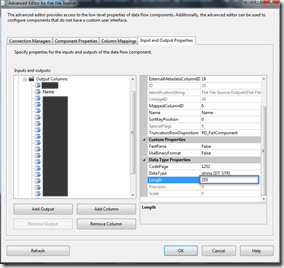An action filter is an attribute that you can apply to a controller action -- or an entire controller -- that modifies the way in which the action is executed. The ASP.NET MVC framework includes several action filters:
- OutputCache – This action filter caches the output of a controller action for a specified amount of time.
- HandleError – This action filter handles errors raised when a controller action executes.
- Authorize – This action filter enables you to restrict access to a particular user or role.
You also can create your own custom action filters. For example, you might want to create a custom action filter in order to implement a custom authentication system.
using System;
using System.Web.Mvc;
namespace MvcApplication1.Controllers
{
public class DataController : Controller
{
[OutputCache(Duration=10)]
public string Index()
{
return DateTime.Now.ToString("T");
}
}
}
In the above example, action is decorated with the OutputCache action filter.
The Different Types of Filters
The ASP.NET MVC framework supports four different types of filters:
- Authorization filters – Implements the
IAuthorizationFilter attribute.
- Action filters – Implements the
IActionFilter attribute.
- Result filters – Implements the
IResultFilter attribute.
- Exception filters – Implements the
IExceptionFilter attribute.
Filters are executed in the order listed above. For example, authorization filters are always executed before action filters and exception filters are always executed after every other type of filter.
Authorization filters are used to implement authentication and authorization for controller actions. For example, the Authorize filter is an example of an Authorization filter.
Action filters contain logic that is executed before and after a controller action executes. You can use an action filter, for instance, to modify the view data that a controller action returns.
Result filters contain logic that is executed before and after a view result is executed. For example, you might want to modify a view result right before the view is rendered to the browser.
Exception filters are the last type of filter to run. You can use an exception filter to handle errors raised by either your controller actions or controller action results. You also can use exception filters to log errors.
The base class for all action filters is the System.Web.Mvc.FilterAttribute class. If you want to implement a particular type of filter, then you need to create a class that inherits from the base Filter class and implements one or more of the IAuthorizationFilter, IActionFilter, IResultFilter, or ExceptionFilter interfaces.
The base ActionFilterAttribute class has the following methods that you can override:
- OnActionExecuting – This method is called before a controller action is executed.
- OnActionExecuted – This method is called after a controller action is executed.
- OnResultExecuting – This method is called before a controller action result is executed.
- OnResultExecuted – This method is called after a controller action result is executed.












 next to the list of library files and choose Attach Files or Attach Directory on the context menu, depending of whether you need separate files or an entire folder.
next to the list of library files and choose Attach Files or Attach Directory on the context menu, depending of whether you need separate files or an entire folder.